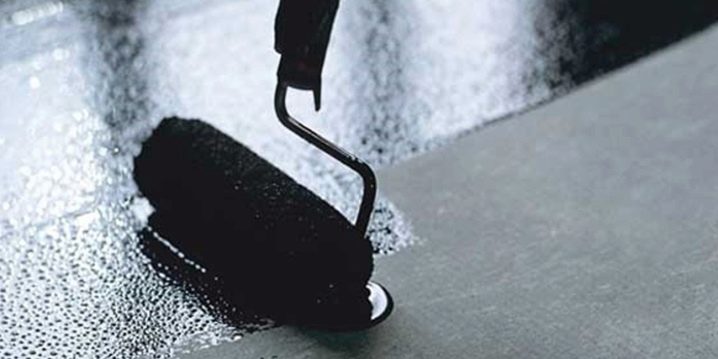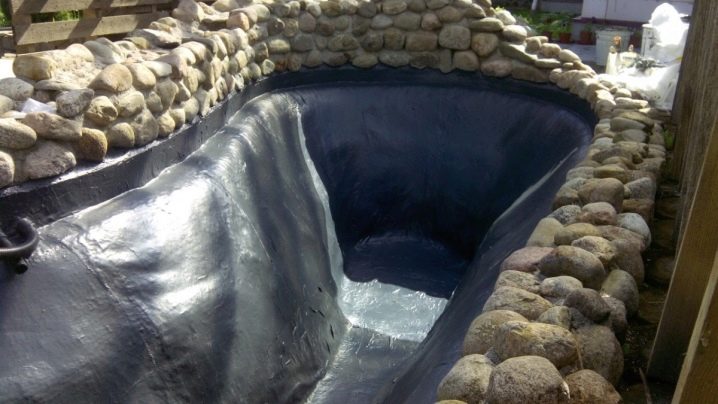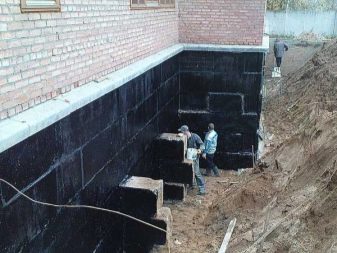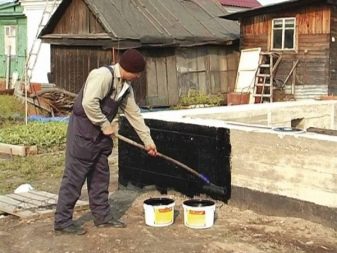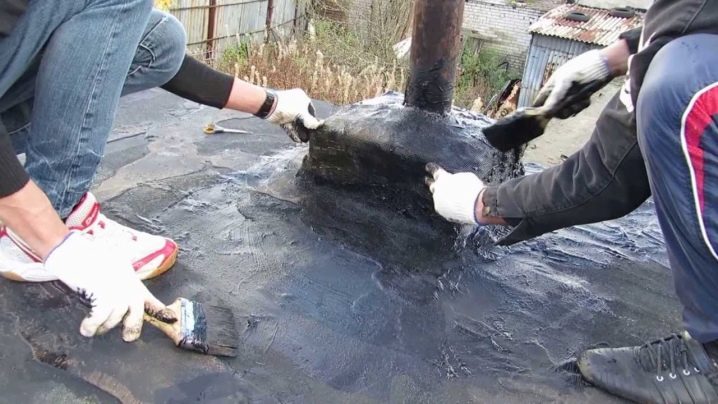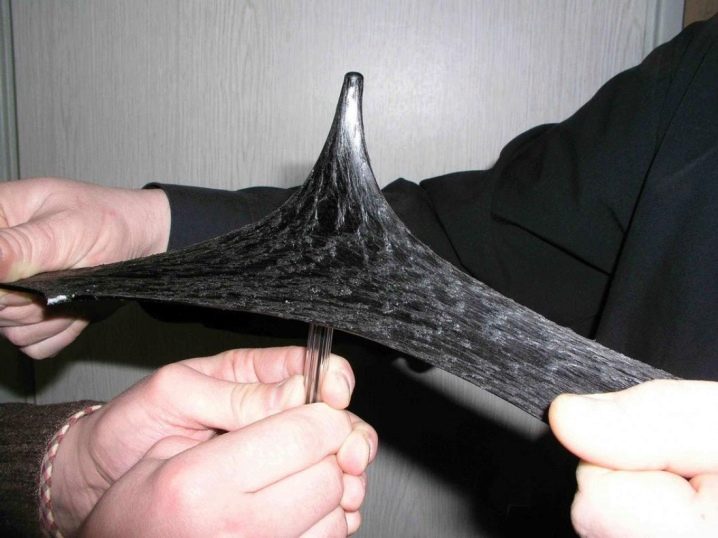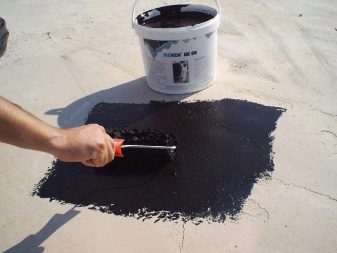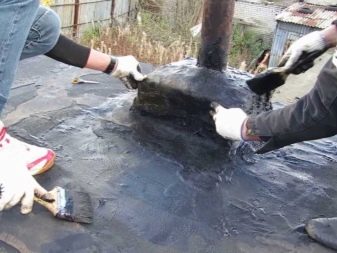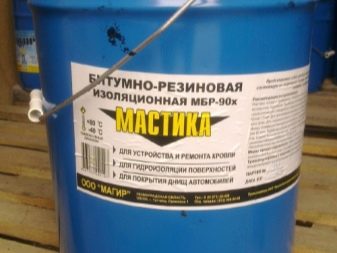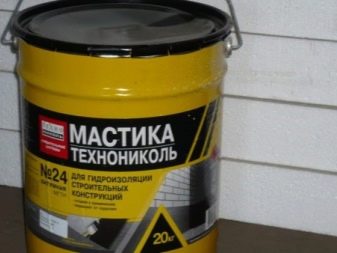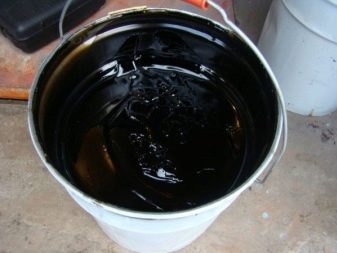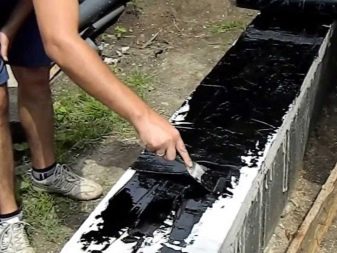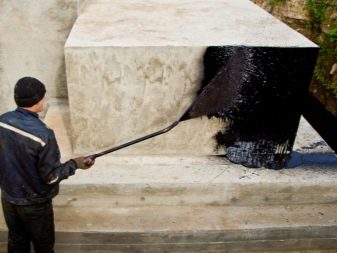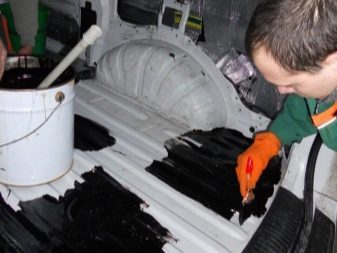Bituminous mastic MBU: technical characteristics and consumption of products
MBU (mastic bituminous universal) is a plastic substance in black with a characteristic specific smell. It is made on the basis of petroleum products (petroleum bitumen). It also adds a small amount of aviation kerosene, which acts as an organic solvent. Mastic is widely used in various types of construction work.
Application of MBU
For coating various surfaces and structures with the purpose of waterproofing and corrosion protection:
- external waterproofing of the basement, underground and burial structures;
- protection of building structures from the effects of precipitation;
- protection against the corrosive effects of moisture and condensate from water pipes, sewage treatment plants, surface and underground pipelines;
- waterproofing of metal surfaces and structures.
For use in roofing:
- restoration and repair work, restoration of old roofing;
- filling of roofs with a mastic surface (at zero or a small angle of inclination of the roof of the building);
- bonding and fixing roofing materials.
MBU is also used as a bonding compound for bonding materials such as: stekloizol, waterproofing, plywood, glassine, fiberboard, chipboard. With the help of mastic is also gluing these materials to concrete, metal and other types of bases.
Properties and features
Bitumen mastic MBU has a set of characteristics and features.
- It is possible to work with MBU at a fairly wide range of temperatures, which is very important for the implementation of work in the open air. Namely, in the conditions of external work, bitumen mastic is most often used. The mastic layer does not lose its properties even at high temperatures, the characteristics are maintained up to the values of + 110 ° C.
- Mastic universal has a long service life. On average, it is 7-10 years. The maximum lifetime is about 20 years.
- The high elasticity of the composition ensures the integrity of the applied waterproofing layer even in case of damage to the surface treated with mastic. The waterproofing layer of mastic can remain complete and not be torn when moderate cracks appear in the roofing base or foundation.
- Optimum viscosity provides an easy application of the composition to any surface, no smudges, uniform distribution. Also this property allows you to more economically spend the composition during the work.
- MBU provides a high degree of waterproofing surfaces, foundations, structures and structures.
- Good adhesion indices allow using MBU as a durable bonding layer for bonding materials to each other or fixing them on different types of base.
- The applied layer of mastic does not peel off and retains aesthetic appearance for a long time.
- The composition of MBU includes a polymer-bitumen product (petroleum bitumen), anti-corrosion and solvent additives (aviation kerosene).
- The share of volatile substances in the composition is not more than 40%.
- The adhesion strength of mastic with concrete is at least 1, 2 MPa, with metal at least 1, 2 MPa.
- Water absorption occurs during the day (24 hours) not more than 0, 002% of the mass of the composition.
- Indicators of maximum and minimum temperatures during operation: from - 65 ° to + 110 ° С.
- The strength of the film layer of mastic under tension 0.87 MPa.
- MBU consumption when applying a waterproofing coating - 2-3 kg per 1 m2, when used as a bonding and fixing layer - 0.8-1 kg / m2. The average consumption of bitumen mastic is about 1.5 kg / m2.
- Bituminous universal mastic is sold in tin buckets with a tight lid of 18 liters. Standard packing MBU is 16 kg.
Drawing MBU on surfaces
Bitumen mastic must be mixed well before use. The composition should be a homogeneous mass. With a significant thickening of the composition in it should be added solvent. Do not use ethyl-based solvents.
Mastic can be applied to the surface with a roller, spatula or brush.
The surface is pre-cleaned and primed with diluted kerosene or acetone mastic (dilution ratio - 1: 1). You can also use a bitumen primer for surface preparation.
When carrying out roofing works, MBU is applied in layers at the rate of 1 kg per 1 m2. It is recommended to lay fiberglass, fiberglass or other reinforcing material between layers. The thickness of the mastic layer should be at least 1.5 mm.
Work with the use of bitumen mastic should be carried out in areas with good ventilation or in the open air. Workers should use work clothes, protective gloves, and respirators.
Mastic storage
The composition is flammable. When storing, it is necessary to strictly observe technical precautions and fire safety. Storage of containers with MBU near heating devices, at open sources of fire is unacceptable. Exposure to direct sunlight for a long time should also be excluded.
See the following video for tips on applying bitumen mastic.
